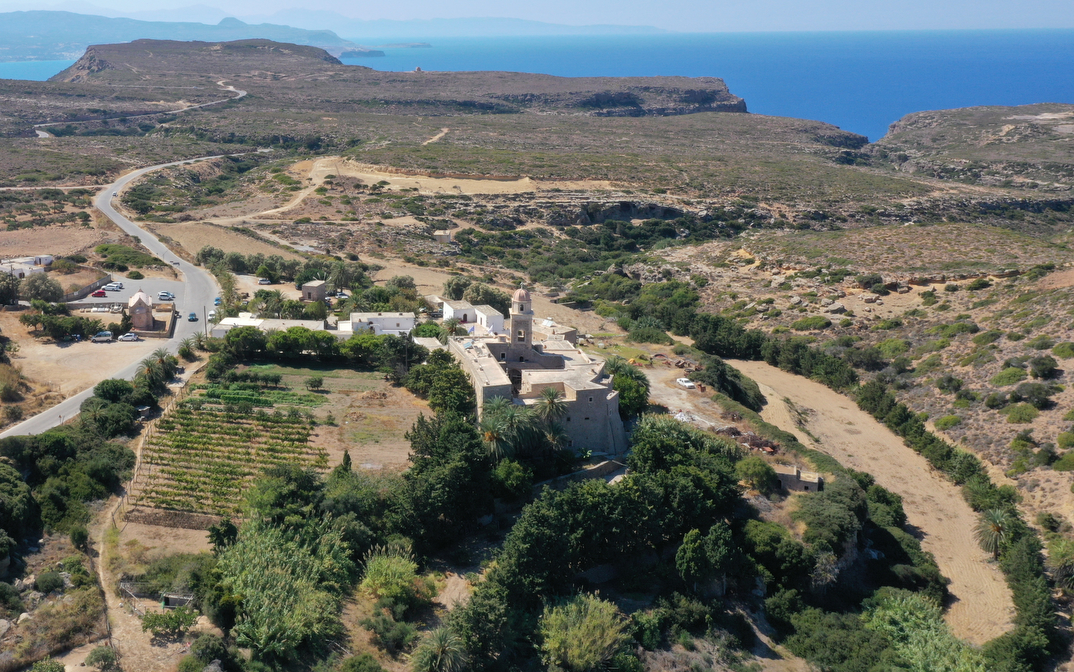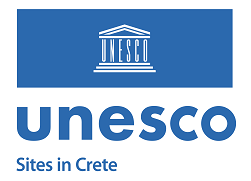Points of interest
The monastery is located at the north-eastern end of the island, 15km from Sitia.
It was founded in the 14th century on a small plateau and covers an area of 800m2. The complex follows a fortress-style architecture, and develops around a central courtyard, on three levels with battlements. The old single-aisled church was located outside the enclosure of the monastery and today only parts of its decoration are preserved. A second two-aisled church is inside the enclosure, with one aisle being older, and dating to the 14th century.
The architecture has Renaissance style elements. The iconostasis (the wall of icons separating the nave from the altar in an orthodox church) has interesting icons of the Byzantine period. The cells of the monks were along the fort and built into the enclosure. The entrance had a double gate, a locking system with a wheel and a machicolation (an opening through which boiling water or cooking oil, could be dropped on attackers).
After the Ottoman raids of the 15th century, the monks rebuilt the monastery and strengthened its defence. According to inscriptions, the families of Kornaros and Mezzo sponsored this reconstruction.
The Byzantine paintings are works of influence of the artistic centres of the byzantine capital, Constantinople as well as Crete.
The Ottomans looted the monastery and changed its name from Akrotiriani monastery to Toplou, as evidenced by a document of 1673. During the revolutions of 1821 and 1866, the monks took part in the War of independence. This led to the monastery being destroyed again by the Ottomans as a retaliation. During the Second World War the monastery was a refuge for the fighters of the resistance.
The monastery hosts an exhibition of relics like icons, manuscripts, sacral vessels, and historical texts. The monks also cultivate 350 acres of vines and produce wine of very high quality.




